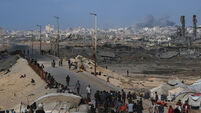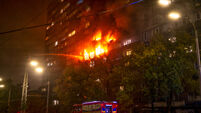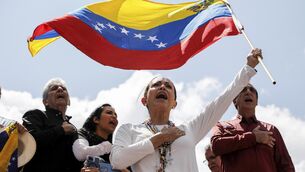Israeli cabinet approves plan for Gaza ceasefire and release of hostages
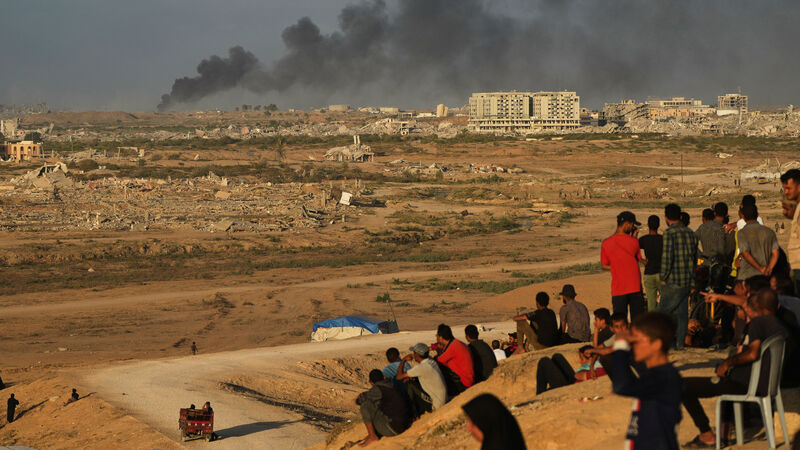
Displaced Palestinians watch smoke rise after Israeli military strikes as they gather on the coastal road near Wadi Gaza. Picture: Abdel Kareem Hana/AP
Israel’s cabinet has approved President Donald Trump’s plan for a ceasefire in the Gaza Strip and the release of all the remaining hostages held by Hamas, a key step toward ending a ruinous two-year war that has destabilised the Middle East.
A brief statement from Prime Minister Benjamin Netanyahu’s office said early on Friday that the cabinet approved the “outline” of a deal to release the hostages, without mentioning other aspects of the plan.
An Israeli official, speaking on condition of anonymity in line with regulations, said the ceasefire should begin immediately after government approval. The Israeli military has 24 hours to pull back its forces to an agreed-upon line.
The broader ceasefire plan includes many unanswered questions, such as whether and how Hamas will disarm and who will govern Gaza.
With the approval of the first phase of the plan, all our hostages will be brought home. This is a diplomatic success and a national and moral victory for the State of Israel.
— Benjamin Netanyahu - בנימין נתניהו (@netanyahu) October 8, 2025
From the beginning, I made it clear: we will not rest until all our hostages return and all our goals…
But the sides appeared closer than they have been in months to ending a war that has killed tens of thousands of Palestinians, reduced much of Gaza to rubble, brought famine to parts of the territory and left dozens of hostages, living and dead, in Gaza.
The war, which began with Hamas’ deadly attack on Israel on October 7 2023, has also triggered other conflicts in the region, sparked worldwide protests and led to allegations of genocide that Israel denies.
Some 1,200 people were killed in the Hamas-led assault and 251 were taken hostage.
In Israel’s ensuing offensive, more than 67,000 Palestinians have been killed in Gaza and nearly 170,000 wounded, according to Gaza’s Health Ministry, which does not differentiate between civilians and combatants but says around half of the deaths were women and children.
In the hours leading up to the cabinet’s vote, Israeli strikes continued. Explosions were seen on Thursday in northern Gaza and a strike on a building in Gaza City killed at least two people and left more than 40 trapped under rubble, according to the Palestinian Civil Defence.
A senior Hamas official and lead negotiator made a speech on Thursday laying out what he says are the core elements of the ceasefire deal – Israel releasing around 2,000 Palestinian prisoners, opening the border crossing with Egypt, allowing aid to flow and withdrawing from Gaza.
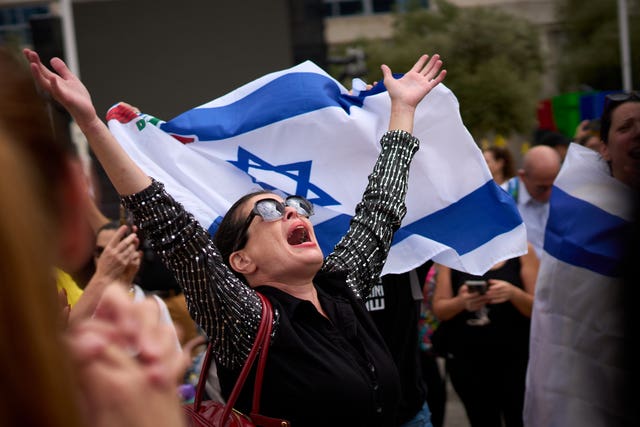
Khalil al-Hayya said all women and children held in Israeli jails will also be freed. He did not offer details on the extent of the Israeli withdrawal from Gaza.
Mr Al-Hayya said the Trump administration and mediators had given assurances that the war is over and that Hamas and other Palestinian factions will now focus on achieving self-determination and establishing a Palestinian state.
“We declare today that we have reached an agreement to end the war and the aggression against our people,” he said in a televised speech on Thursday evening.
US officials said that they would send about 200 troops to Israel as part of a broader, international team. The officials spoke on condition of anonymity to discuss details not authorised for release.
The deal, which was expected to be signed in Egypt, will include a list of prisoners to be released and maps for the first phase of an Israeli withdrawal to new positions in Gaza, according to two Egyptian officials briefed on the talks, a Hamas official and another official.
Israel will publish the list of the prisoners, and victims of their attacks will have 24 hours to lodge objections.
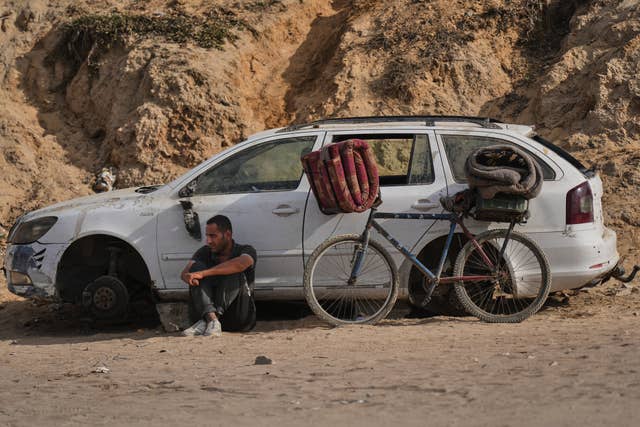
The hostage and prisoner releases are expected to begin on Monday, the officials from Egypt and Hamas said, though the other official said they could occur as early as Sunday night.
Five border crossings would reopen, including the Rafah crossing between Gaza and Egypt, the Egyptian and Hamas officials said.
UN humanitarian chief Tom Fletcher told reporters on Thursday that officials have 170,000 metric tons of medicine, aid and other supplies at ready for transport into Gaza when they are given a green light.
The Trump plan calls for Israel to maintain an open-ended military presence inside Gaza, along its border with Israel. An international force, comprised largely of troops from Arab and Muslim countries, would be responsible for security inside Gaza. The US would lead a massive internationally funded reconstruction effort.
The plan also envisions an eventual role for the Palestinian Authority — something Mr Netanyahu has long opposed. But it requires the authority, which administers parts of the West Bank, to undergo a sweeping reform programme which could take years.
The Trump plan is even more vague about a future Palestinian state, which Mr Netanyahu firmly rejects.



